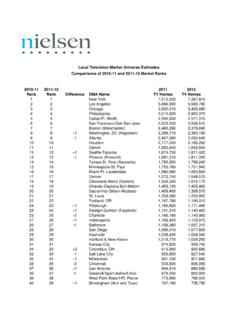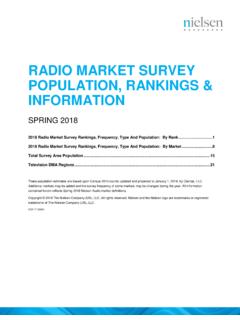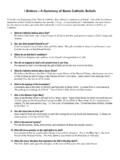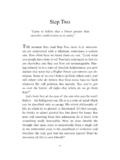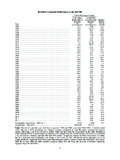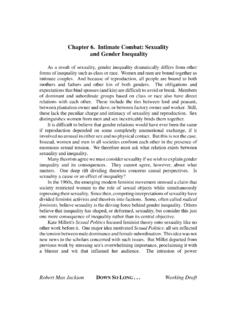Transcription of WE ARE WHAT WE EAT - Nielsen
1 1 global health AND wellness report Copyright 2015 The Nielsen CompanyWE ARE what WE EATHEALTHY EATING TRENDS AROUNDTHE WORLDJANUARY 20152 global health AND wellness report DO BODY IMAGE PERCEPTIONS AND EATING HABITS GO HAND-IN-HAND?AROUND THE WORLD: Half (49%) of global respondents believe they are overweight, and half (50%) are trying to lose weight. Consumers seek fresh, natural and minimally processed foods.
2 Beneficial ingredients that help fight disease and promote good health are also important. health attributes are most important to emerging-market respondents, who are also most willing to pay a premium for health benefits. Younger consumers are most willing to pay a premium for health attributes. Healthy categories are growing faster than indulgent categories, but there is still room for occasional treats in consumers global health AND wellness report Copyright 2015 The Nielsen CompanyTurn on the TV, flip open a magazine or log on to the Internet and chances are you ll see a headline about how to quickly drop unwanted weight using the latest exercise fad or diet craze.
3 Despite the incredible attention devoted to health and wellness , over the past 30 years, the percentage of people worldwide considered overweight (BMI 25 to <30) or obese (BMI 30) increased 28% in adults and 47% in children, according to the 2013 global Burden of Disease Study. The study reports that in 2013, an estimated billion people nearly 30% of the global population were overweight or obese. As the numbers suggest, obesity isn t just a problem in the developed world. Although obesity rates are lower in developing markets, 62% of the world s 671 million obese individuals live in developing markets and rates are good news is that consumers around the world are attempting to take charge of their health .
4 Nearly half (49%) of global respondents in Nielsen s global health & wellness Survey consider themselves overweight, and a similar percentage (50%) is actively trying to lose weight. And they re doing so by making more healthful food choices with help from food and beverage companies. Manufacturers are reformulating products to eliminate or reduce the sugar, cholesterol, trans and saturated fat and sodium content of food. They re moving away from artificial ingredients and introducing products high in desirable attributes like fiber and protein.
5 But there s room for continued action. There is a tremendous opportunity for food manufacturers and retailers to lead a healthy movement by providing the products and services that consumers want and need, said Susan Dunn, executive vice president, global Professional Services, Nielsen . While diet fads come and go over time, innovative, back-to-basics foods that taste good, are easy to prepare and provide healthful benefits will have staying power. The first step is knowing where to put your product development efforts.
6 The Nielsen global health & wellness Survey polled 30,000 online respondents in 60 countries to identify how consumers feel about their body image and the steps they re taking to get healthier. We also provide insights into the product attributes that are most important in purchase decisions and which ones consumers are willing to pay more for. We take an in-depth look at purchasing trends and future intentions to identify opportunities that will help manufacturers better align offerings to consumer needs and desires.
7 The findings in this survey are based on respondents with online access in 60 countries. While an online survey methodology allows for tremendous scale and global reach, it provides a perspective only on the habits of existing Internet users, not total populations. In developing markets where online penetration is still growing, audiences may be younger and more affluent than the general population of that country. In addition, survey responses are based on claimed behavior rather than actual metered data. Where noted, the survey research is supplemented with actual behavior using Nielsen s retail sales THE global SURVEY METHODOLOGY4 global health AND wellness report IN THE BATTLE OF THE BULGE, DIET AND EXERCISE DOMINATE Around the globe, the majority of respondents rely on tried-and-true methods to lose weight diet and exercise.
8 Three quarters of global respondents who are trying to lose weight plan to change their diet, and nearly as many (72%) plan to exercise. Comparatively, low percentages of respondents use other methods to shed unwanted pounds: 11% say they take diet pill/bars/shakes, 7% use medicine prescribed by their doctor and 6% use other methods not described in the survey. Among those who are changing their diet to lose weight, nearly two-thirds (65%) say they are cutting down on fats, a decline from 70% reported in Nielsen s 2011 global health & wellness Survey, and 62% are eating less chocolate and sugary sweets, a percentage that holds steady from 2011.
9 Conversely, more than half of global respondents (57%) are expanding their diets with more natural, fresh foods, up from 55% reported three years smaller portions is the diet method of choice for four-in-10 global respondents (41%) and nearly as many are choosing to consume fewer processed foods (37%). A low-carbohydrate, high-fat diet has increased in popularity since 2011, rising seven percentage points to 25%. One-in-five (19%) respondents are following another non-specified diet plan, and one-in-10 (11%) are opting for commercial slimming programs like Weight s reputation as dietary enemy No.
10 1 is fading in North America. Between 2011 and 2014, the number of respondents saying they are cutting down on fats (59%) dropped by double-digits (14 percentage points). Over the same period, the number of North American respondents following a low-carb, high-fat diet (23%) increased 10 percentage points. While the low-carb movement appears to be gaining momentum in North America, the region still trails Asia-Pacific in adoption, where 34% of respondents say they follow a low-carb, high-fat diet to lose weight the highest of any smaller portions to lose weight is most popular in North America (49%) and Latin America (48%), and the percentage of respondents eating fewer processed foods is highest in North America (46%).





